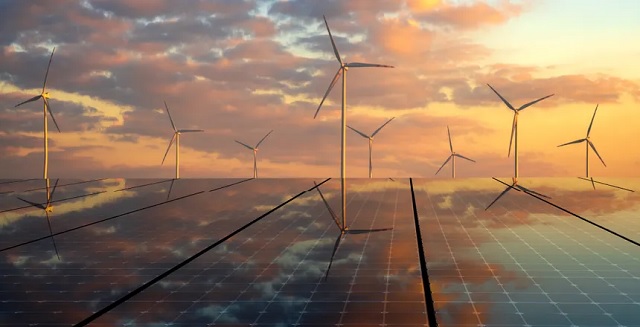Biden’s Signature Climate Law Has A Major Achilles’ Heel — And Dems Are Making It Worse

President Joe Biden’s landmark climate bill is being held back by a lack of comprehensive permitting reform, the absence of which enables environmentalist lawsuits that impede green energy projects subsidized by the legislation.
The Inflation Reduction Act (IRA) contained hundreds of billions of dollars to subsidize green energy projects nationwide, but the bill did not include significant reform to the permitting process that would expedite construction timelines and insulate developments from environmental legal challenges. Unless Congressional Democrats can negotiate a permitting reform package with Republicans in an election year, these problems will continue to dog the IRA’s implementation, energy policy experts and stakeholders told the Daily Caller News Foundation.
After solar and wind developments have been built, they need to be connected to the grid via transmission lines to feed power into the grid. Permitting reform would speed up the lengthy paperwork process for that transmission, as well as provide developers an additional layer of protection against environmental lawsuits that also disrupt the construction of green energy developments.
Dems’ Energy Permitting Reform Bill Includes Billions For Eco-Activist Groupshttps://t.co/okXWYcE3Ph
— Daily Caller (@DailyCaller) January 30, 2024
However, that reform has not happened yet, thanks in part to Congressional Democrats’ inability to agree among themselves on what that reform should look like to counter Republican proposals, according to E&E News.
“I think that not having any transmission reform is a huge barrier to implementing the IRA,” Isaac Orr, a policy analyst for the Center for the American Experiment who specializes in energy policy, told the DCNF. “I think there was an understanding that permitting reform was necessary in order to implement a lot of the things Democrats wanted as soon as they got the IRA … It’s a physical reality that you need the transmission in order to incorporate all this new capacity on the grid.”
The lack of reform has left numerous green energy developments open to legal challenges filed by environmental groups, who often will pursue similar legal strategies adopted by opponents of fossil fuel infrastructure projects in the past.
For example, a coalition of tribes and environmental organizations are suing to block a massive $10 billion transmission project in Arizona, while different coalitions have taken to court to allege violations of environmental laws on the part of offshore wind developers building wind farms in waters off the coasts of Virginia and Massachusetts. Elsewhere in the country, conservation groups have continued the years long fight against Wisconsin’s Cardinal-Hickory Creek transmission line by suing the government to stop construction.
“Reforms aimed at streamlining the federal government’s permit decision-making process and discouraging frivolous litigation have the potential not only to improve regulatory efficiency but also to bring about greater certainty and predictability in the offshore wind sector,” Erik Milito, the president of the National Ocean Industries Association (NOIA) told the DCNF. “Litigation, particularly around alleged National Environmental Policy Act deficiencies, has been a significant hindrance for offshore wind projects. A robust U.S. offshore wind market relies on confidence and certainty in the permitting and regulatory process, which is essential for fostering growth and ensuring the success of these projects, much like any other major infrastructure endeavor.”
Democratic West Virginia Sen. Joe Manchin, a leading advocate for comprehensive permitting reform, has tried to advance legislation to expedite the permitting process and minimize opportunities for litigation to gum up timelines for all kinds of energy projects.
In total, there are no fewer than ten different permitting-related bills in Congress and two major regulatory initiatives underway on the federal level, but progress on streamlining the permitting process is still very sluggish, according to Utility Dive.
“All of these things, the Clean Water Act, the way the National Environmental Policy Act is now run … you can’t get anything built because of these statutes,” Mike McKenna, a Republican strategist with extensive experience in and around the energy sector, told the DCNF about Congressional gridlock on permitting reform.
“So we are about a year into you’re what I think is going to be a seven- or eight-year process, where everyone on the Left starts figuring out, ‘Oh, my goodness, these guys were right, You can’t build any of this stuff.”
Neither the White House nor the Department of Energy responded to requests for comment.
AUTHOR
NICK POPE
Contributor.
RELATED ARTICLE: Blue States Are Stripping Rural Counties Of Ability To Prevent Green Energy Takeover Of Their Communities
EDITORS NOTE: This Daily Caller column is republished with permission. ©All rights reserved.
All content created by the Daily Caller News Foundation, an independent and nonpartisan newswire service, is available without charge to any legitimate news publisher that can provide a large audience. All republished articles must include our logo, our reporter’s byline and their DCNF affiliation. For any questions about our guidelines or partnering with us, please contact licensing@dailycallernewsfoundation.org.




